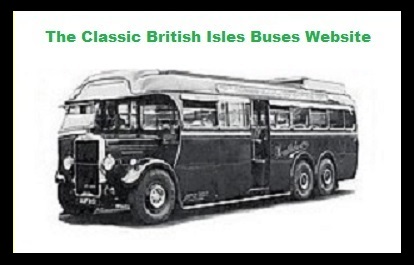

The Classic British Isles Buses Website
Transport in Uzbekistan - 5. Miscellaneous (by Dick Gilbert)
Last updated 29 August 2024
Email Events diary Past events list Classified adverts Classic U.K. Buses Classic Irish Buses Classic Manx Buses
| Aeroplanes in 2015 | Buses in 2015 | Cars in 2015 | Trucks in 2015 | Other transport in 2015 |
This addition to the Classic British Isles Buses Website International Section is the result of a visit to the Central Asian Republic of Uzbekistan in November 2015, and on this page we look at some of the miscellaneous transport modes there.
The visit to Uzbekistan included many of the historic cities along the ancient Silk Road that used to see camel caravans transporting exotic spices and textiles from China to Europe hundreds of years ago. Much of it survives to this day, but we travelled not by camel, but by Chinese-built tour coach, Spanish-built express train and European Airbus airliner.
Having looked at the common modes of road and air transport on my other pages, this is a collection of bits and pieces that don't fit into the other categories. For example, apart from walking, there's no simpler form of transport than a donkey.
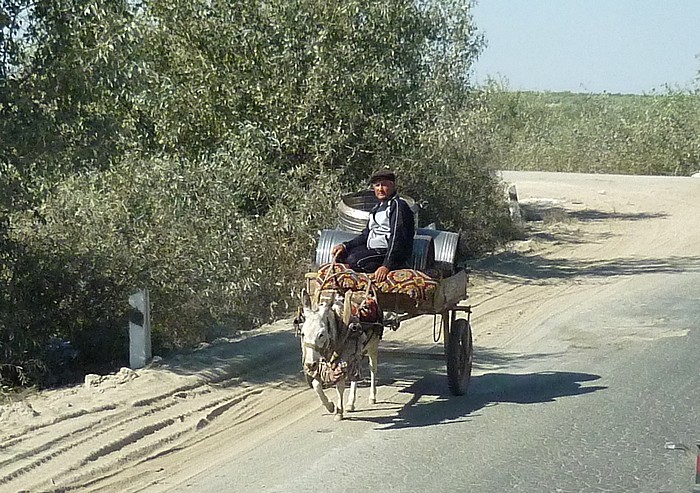
There are a lot of working donkeys in Uzbekistan, and this one seems to be hauling brand new dustbins, as far as I can see.
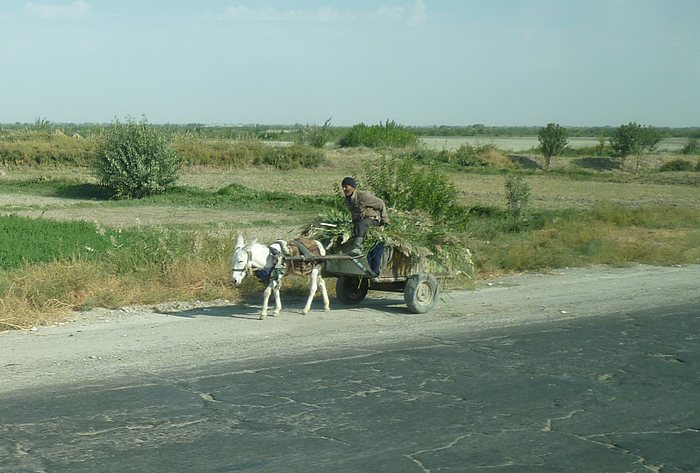
This is another donkey in use for agricultural purposes. The cracked road surface in the foreground is exactly what the Koreans were in the process of replacing right across the country, and some of the roads are a darned sight worse than this.
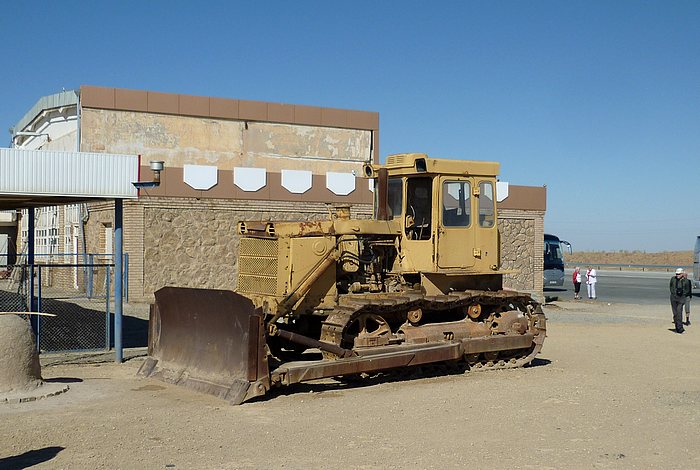
Talking of roadbuilding, here we are in the middle of the desert between Khiva and Bukhara near the border with Turkmenistan. The Koreans were rebuilding the whole of this 300 mile stretch and using the latest heavy kit from China and Japan. Old Russian equipment, like this ChTZ (short for Cherepovets) T130 tractor / bulldozer, is clearly no longer up for the job, and just gets abandoned. Can someone please tell me what the word Spycharka has to do with this dozer? Is it a version built in Poland? Thanks for any clues.
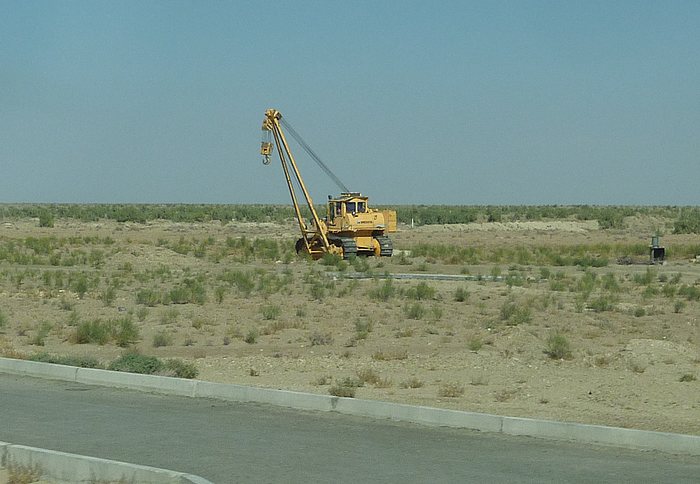
This is an unusual piece of equipment - it is a Dressta SB-85 pipe-layer, made in Poland. It can lift up to 100 tons and is driven by a 19-litre Cummins engine. They normally work in banks of 2, 3 or even up to 6 in a line, so it's curious to see one on its own, standing alongside the desert roadbuilding project. The lump at the back (right) of the vehicle is one of two controllable counterweights to compensate when heavy pipes are being lifted.
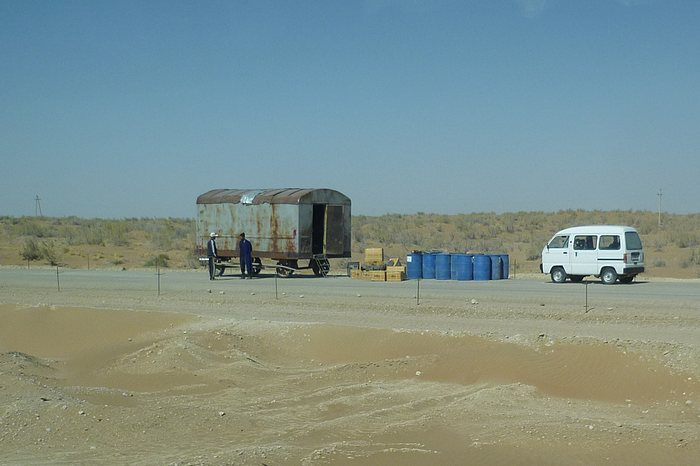
Wherever we went, we came across these little mobile cabins, and I understand they're common in Russia too. This one is out in the desert alongside the roadbuilding works. My guess is that they used to be living accommodation for workers who are now housed in camps / temporary villages, so the vans have found other uses. They could be mobile toilets, or catering vans perhaps.
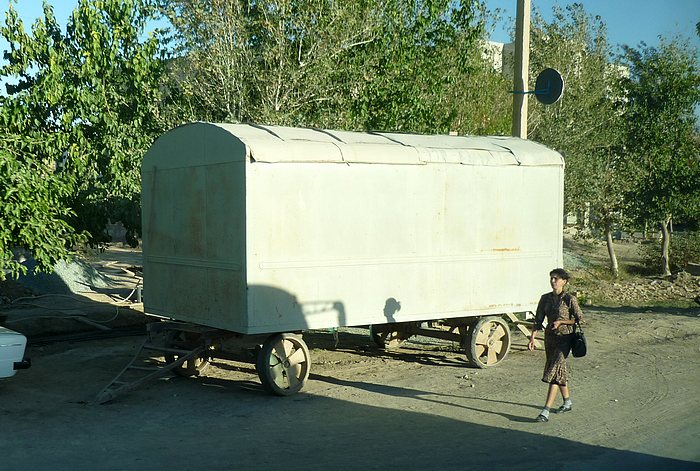
Here's another of those trailers, parked in a village in southern Uzbekistan. The fact that it has no windows makes me think this could be a mobile toilet.
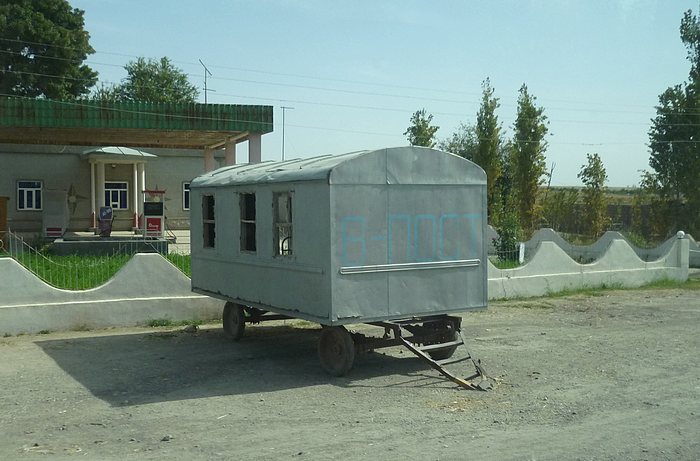
And here's another one of those trailers (this time with windows), plonked outside someone's house. I wonder what the painted inscription on the front means - for sale maybe?
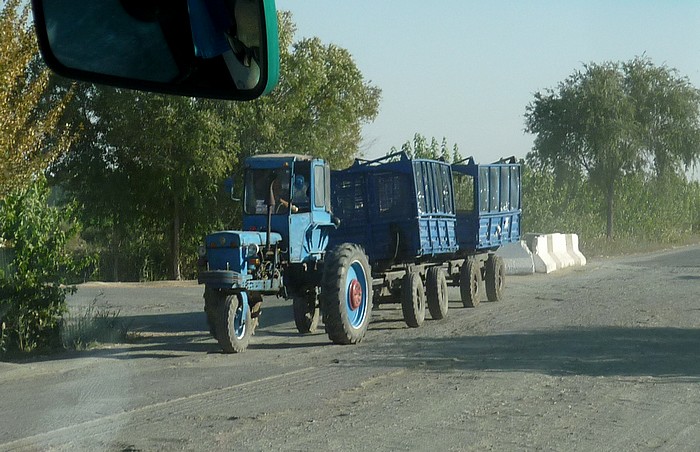
These 3-wheel TTZ-80 tractors were very common in agricultural regions. They are made by the TTZ (Tashkent Tractor Plant) factory in Ukbekistan. TTZ is a joint venture with Case New Holland.
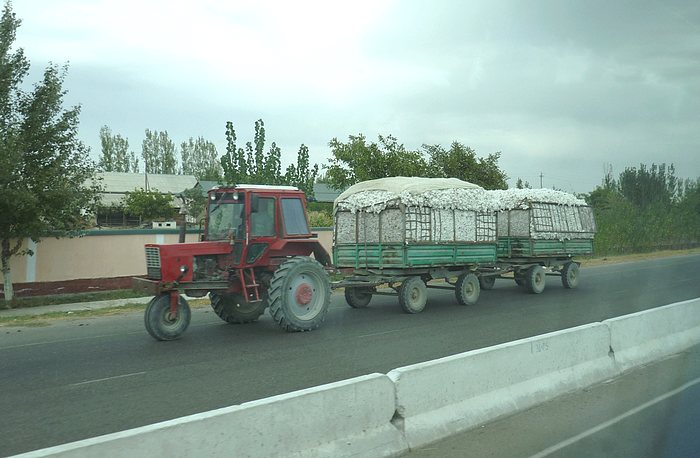
Here's another TTZ-80. The 3-wheel arrangement is specifically for cotton farmers, and this is a load of cotton. Our guide said that the arrangement did less damage to the crop. I said that surely 3 wheels make 3 tracks through the field, whereas 4 wheels would only leave 2 tracks. He said "Yes, but what about when it has to turn round at the end?" I must be missing something. Perhaps a cotton farmer can help me out.
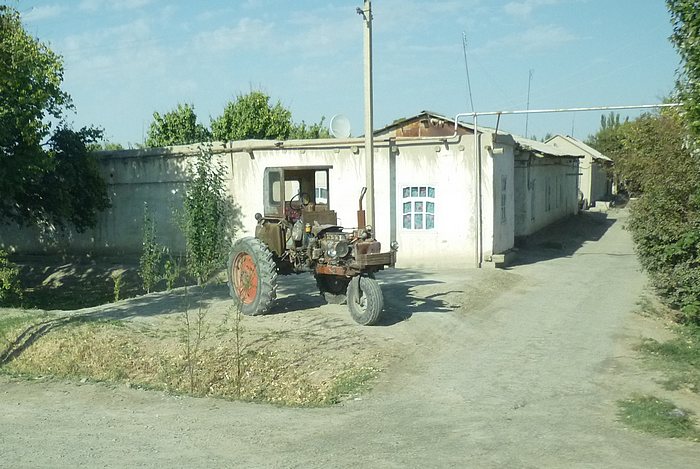
This TTZ-80 tractor seems to have lost some bits.
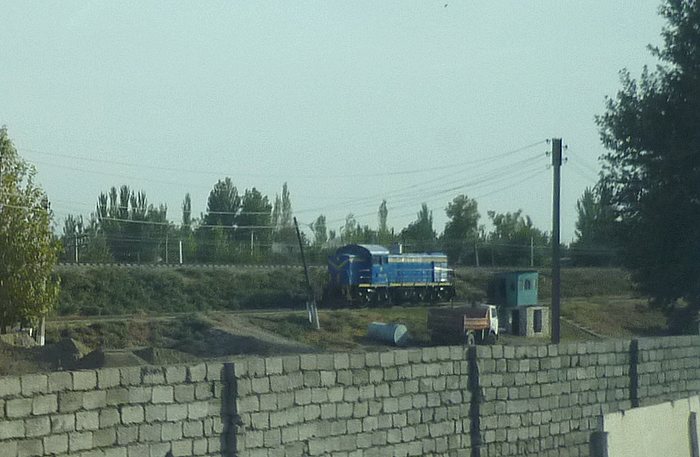
An Uzbek Railways locomotive is hiding behind a wall near Samarkand. In 1945 the US government donated 70 ALCO RSD-1 diesel-electric co-co locos to Russia as part of the war effort, and the Soviets later copied the design to create their TE1 loco, followed by the TE2, TEM2 and then the smaller TGM4 from around 1970. This is the TGM4B bo-bo loco with a Caterpillar 3508 motor. Trains run into Afghanistan (Mazar-i-Sharif) from this part of southern Uzbekistan, and this could be one of the locos that operate the service.
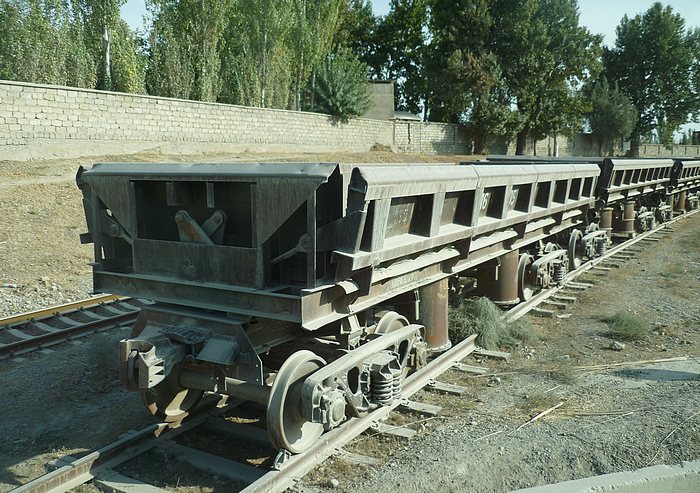
The railway line from Bukhara to Samarkand runs close to the road, and we crossed it several times. Here are some ballast wagons, of which we saw a great number. The track gauge in Uzbekistan is 5 feet (1520mm), which is the same as most of Russia.
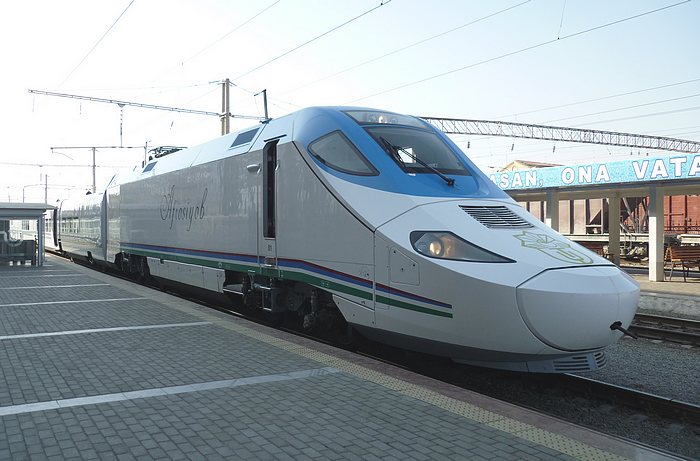
From Samarkand we caught the prestigious Afrosiyob express to Tashkent - the only electrified line in the country. Here is the Afrosiyob waiting in Samarkand station. The train is named after a hill, which is named after a legendary king. Two train-sets were delivered in 2011 from Talgo in Spain, each with 2 power cars, 8 passenger cars and a diner.
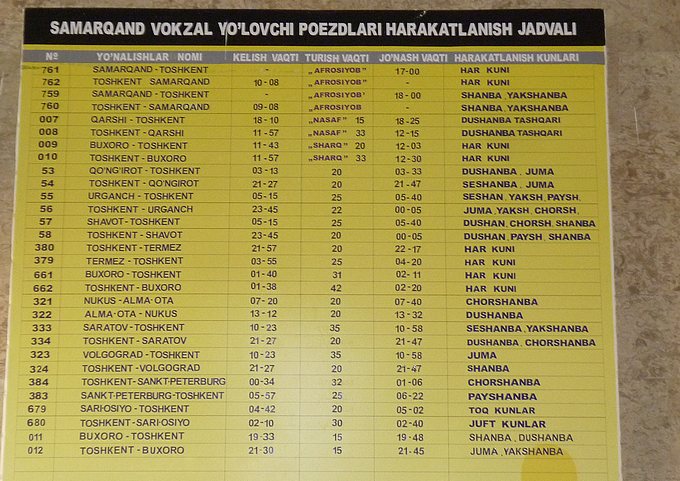
This the timetable on the wall in Samarkand railway station. It doesn't seem to be arranged in order of time, destination or route number. The 3rd column shows arrival times, then the time waiting at the station, and the 5th column is departures. The last column is the days of the week - don't ask... Lower down the list you can see trains to Alma Ata (Kazakhstan), Volgograd (Russia) and St Petersburg (Russia) which is about 2,600 miles and takes 5 days.
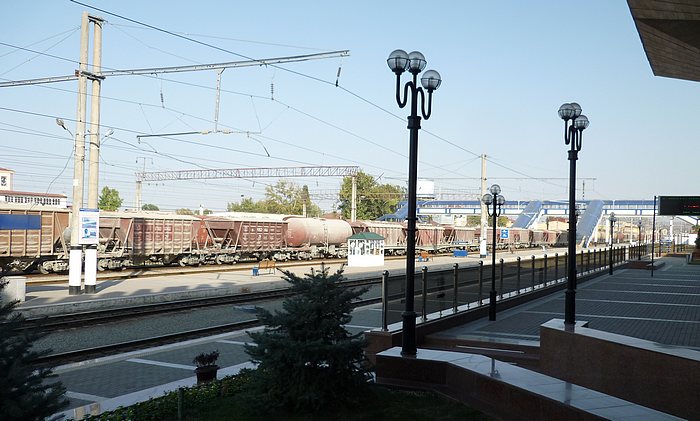
This is a general view of the railway yard at Samarkand, as seen from the passenger platform. A lot of stuff moves by rail in Uzbekistan because the distances are great and the roads are not. Also the country depends largely on mineral extraction for much of its income, and this lends itself to rail transport, especially when it comes to export.
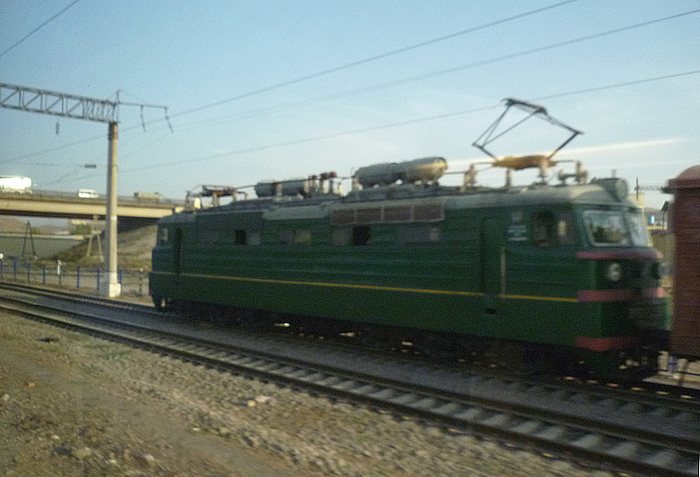
The Afrosiyob runs to Tashkent on its own high-speed line, but alongside is the old (also electrified) main line and I was able to photograph (not very well) some stock whizzing by on this. Here is a VL80 electric AC main line loco. First built by the Soviets in 1961 the type remained in production for an amazing 33 years.
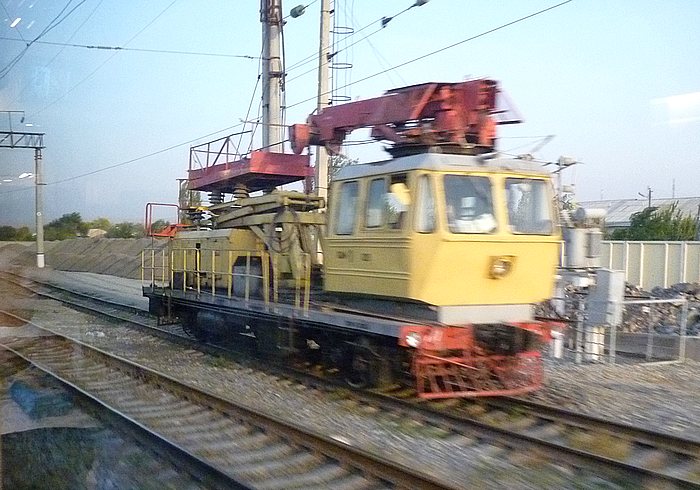
This would seem to be an overhead / catenary maintenance unit, probably a Russian-built ADM-1.
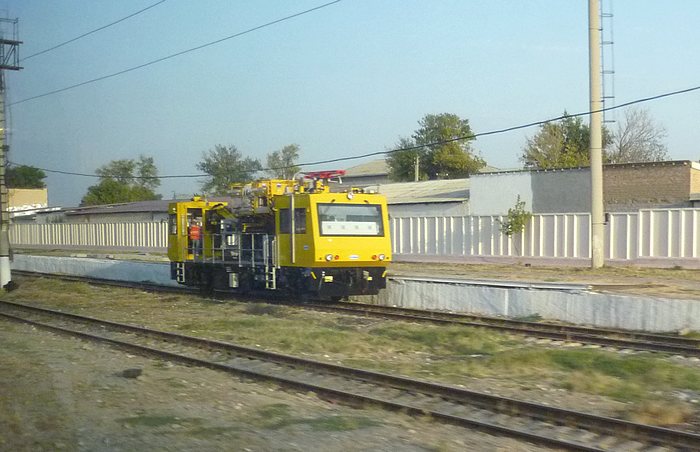
Here is another form of track / catenary maintenance unit. I've no idea what it is or who built it. It looks brand new.
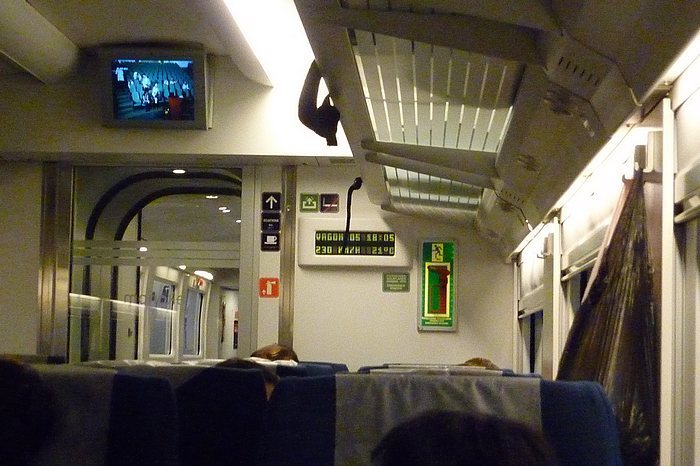
It's 214 miles from Samarkand to Tashkent and the high-speed Afrosiyob trains get up to 230km/hr (143 m.p.h.) occasionally, as shown on the wall display in the centre of this picture, enabling the trip to take just over two hours. That is, of course, only about half the speed we reached on our high speed train in China adventure, but that's another story.
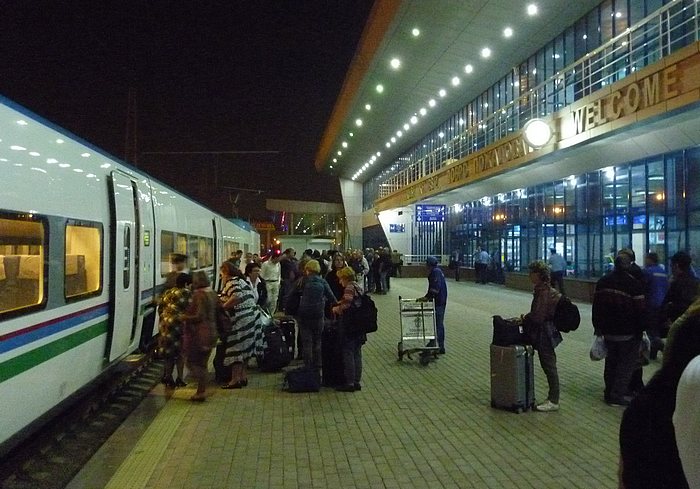
It may not look like it, but we are actually seen here disembarking from the Afrosiyob express in Tashkent. The apparent confusion is because we are all trying to make sure we've claimed the same pieces of baggage that we put on the train in Samarkand.
Email Events diary Past events list Classified adverts Classic U.K. Buses Classic Irish Buses Classic Manx Buses